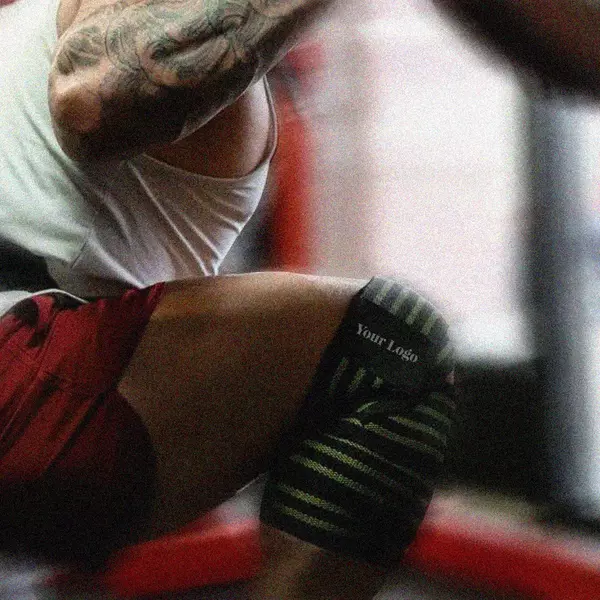Notifications
ALL BUSINESS
COMIDA
DIRECTORIES
ENTERTAINMENT
FINER THINGS
HEALTH
MARKETPLACE
MEMBER's ONLY
MONEY MATTER$
MOTIVATIONAL
NEWS & WEATHER
TECHNOLOGIA
TV NETWORKS
VIDEOS
VOTE USA 2026/2028
INVESTOR RELATIONS
COMING 2026 / 2027
ALL BUSINESS
COMIDA
DIRECTORIES
ENTERTAINMENT
FINER THINGS
HEALTH
MARKETPLACE
MEMBER's ONLY
MONEY MATTER$
MOTIVATIONAL
NEWS & WEATHER
TECHNOLOGIA
TV NETWORKS
VIDEOS
VOTE USA 2026/2028
INVESTOR RELATIONS
COMING 2026 / 2027
About Me
 FitGrips Grips
FitGrips Grips FitGrips helps gyms and fitness brands stand out with high-quality, custom-branded gear like wrist wraps, lifting belts, and more—built for performance, designed for your brand.
 FitGrips Grips -
11 hours ago -
Health -
5 views -
0 Comments -
0 Likes -
0 Reviews
FitGrips Grips -
11 hours ago -
Health -
5 views -
0 Comments -
0 Likes -
0 Reviews

The fitness world is filled with accessories promising better performance, greater safety, and enhanced results—but not all tools are right for everyone. One such controversial yet popular tool is the Custom knee wrap. If you’ve ever walked into a gym and seen a lifter tightly winding elastic bands around their knees before a heavy set, you’ve witnessed knee wraps in action.
But what are they really for? Are Custom knee wraps for squats just for competitive powerlifters, or can the average gym-goer benefit too?
In this in-depth article, we’ll break down the essentials of knee wraps, who should use them, how they work, and whether they’re worth incorporating into your training program.
Custom Knee wraps are long, thick elastic bands—usually around 2 meters in length—designed to be wrapped tightly around the knee joint. They’re made from stiff materials that provide resistance and support during knee flexion and extension.
Unlike knee sleeves, which slide over the leg and offer gentle compression and warmth, knee wraps are primarily about performance enhancement. They store kinetic energy during the descent of a squat and release it during the ascent, giving lifters a powerful “pop” out of the hole.
This mechanical rebound is what allows many powerlifters to hit PRs that wouldn’t be possible raw.
While they’re not for every situation, knee wraps for lifting offer distinct benefits when used correctly:
One of the biggest reasons athletes use knee wraps for squatting is for the immediate increase in power. When you descend into a squat, the wrap tightens and stretches—similar to a rubber band. As you rise, the stored tension aids in the lift, giving you more power, especially at the sticking point.
The knee is a vulnerable joint, especially under a heavy barbell. Knee wraps for powerlifting help to reduce unnecessary lateral movement and keep the joint aligned throughout the lift. This added stability can prevent minor tweaks or long-term wear.
Heavy squats put tremendous pressure on the quads and their connecting tendons. Some research suggests knee wraps can reduce tension on the quadriceps tendon by redistributing forces more evenly across the joint.
Let’s be real—lifting is as much mental as it is physical. The feeling of tight, secure knee wraps can give you the psychological edge to go for that extra rep or heavier plate.
Despite their advantages, knee wraps are not ideal in every situation. In fact, they can sometimes cause more harm than good if misused.
Wearing knee wraps for every set can limit mobility and keep your stabilizing muscles from engaging properly. Save them for heavy sets at or near max effort.
If your training involves full mobility, speed, or dynamic movement—such as in CrossFit, weightlifting, or HIIT—knee sleeves are a better fit. Knee wraps can restrict range of motion, which can be counterproductive for these modalities.
Wraps are not rehab tools. If you’re using knee wraps just to "get through" pain, you're masking an issue that should be addressed with mobility work or physical therapy.
Overusing knee wraps for gym training—especially by beginners—can lead to:
Weakening of surrounding stabilizer muscles
Reduced joint mobility
Over-reliance on gear for performance
Risk of improper technique
Think of knee wraps as a supplement to your lifting—not a replacement for skill, strength, or proper programming.
Using knee wraps properly is crucial. Here's a basic guide:
There are two main wrapping styles:
Spiral wrap: Wrap the band around the leg in a corkscrew pattern, overlapping each layer.
Cross or “X” wrap: Crisscross the wrap to add compression in specific areas.
Anchor the wrap about 2 inches below the kneecap and wrap upward in tight, overlapping layers.
You want strong support, but not so tight that it cuts off circulation. If your toes go numb, it’s too tight.
Either tuck in the end or use a wrap with Velcro to hold it in place. Then test the wrap with some bodyweight squats before loading up the bar.
If you’re considering a pair of wraps, these are solid choices:
Titan Signature Gold Knee Wraps: Incredibly stiff, best for max squats.
Iron Rebel Outlaws: Good balance of rebound and comfort.
RDX Elastic Knee Wraps: Budget-friendly for beginners.
Always choose based on your level, training style, and preference for rebound vs. support.
Powerlifters training for competition
Advanced lifters working at 90–100% of 1RM
Lifters returning from injury under supervision
Bodybuilders doing heavy leg press or squat sets
New lifters under 1 year of experience
People focusing on functional fitness or mobility
Those working on squat depth and form
Myth #1: Knee Wraps Prevent All Injuries
They help, but they’re no substitute for proper form, warm-ups, and programming.
Myth #2: Everyone Should Use Them
Most lifters won’t need them until they reach heavier loads consistently.
Myth #3: They’re Cheating
If used in a competitive environment where they’re allowed, they’re fair game. They’re a tool—just like a belt or lifting shoes.
Knee wraps are a powerful tool—but one that needs to be used with purpose. They can help you lift heavier, protect your knees under extreme loads, and boost your confidence during PR attempts. However, they’re not necessary for every lifter, every day, or every set.
If you’re consistently lifting near your max and are focused on strength goals, especially squatting, then yes—knee wraps for powerlifting could absolutely be worth it.
But for general training, proper warm-ups, strength progression, and technique should always come first.
